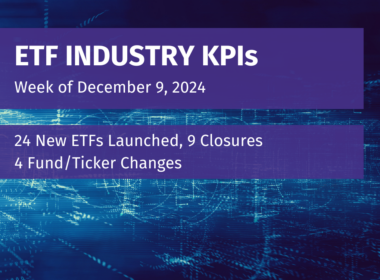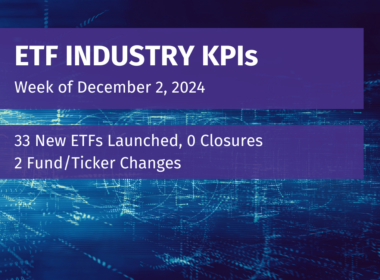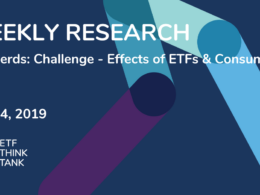It’s midyear outlook season, and by the looks of it, we remain in a proceed-with-caution environment.
The search for insight this time of the year comes on the heels of a challenging first half for US and global markets.
While asset managers and investment minds alike offer myriad views, outlooks share a similar restraint when it comes to enthusiasm for stocks and bonds going forward.
They talk of uncertainty, high volatility, and concerns about inflation lingering in the near-term. They talk of the Fed, and the chances of a soft or hard landing. They talk of recession and global growth. They talk of diversification, risk management, and the importance of time horizon when it comes to portfolio allocation decision making.
And finally, they talk of possible opportunities going forward. Here, we dig into five (randomly selected) midyear outlooks for equities and fixed income and share some highlights.
Equities: Defense is the Best Offense
Midyear outlooks seem to share a consensus view that equities may continue to be tested in the second half of the year. The prevailing call to action? Stay defensive.
Charles Schwab expects US equities to remain “under pressure.” The firm says high volatility and the possibility of additional market weakness tied to weaker earnings and/or weaker profit margins could lie ahead. In this environment, they say, diversify, rebalance, and focus on quality names, especially on companies with strong free cash flow.
“History’s lessons about the impact of Fed rate-hike cycles suggest a recession is more likely than a soft landing,” the firm said in its outlook. “This is not a market likely to reward excessive risk-taking.” (You can read the Schwab midyear outlook in its entirety here.)
Invesco echoes that sentiment. The firm suggests reducing risk exposure and focusing on large caps and quality stocks in “defensive sectors” that should be better positioned to weather a slowdown in economic growth.
“In our base case scenario, we expect slowing growth and peaking inflation to support moderate outperformance of defensive sectors with quality characteristics and higher duration (IT, communication services, health care, real estate, and consumer staples),” the outlook says. (You can read the Invesco outlook in its entirety here.)
T. Rowe Price, too, suggests taking on a defensive stance on stocks, keeping an eye on what matters: fundamentals.
The firm expects the market’s focus to move from interest rate risk to earnings growth risk going forward. In its words, “In the second half, stock market performance is likely to depend on the outlook for corporate earnings growth. Higher interest rates potentially could favor some value sectors, including financials. The growth style could be challenged by tough year-over-year earnings growth comparisons and continued weakness in the technology sector.” (You can read the T. Rowe Price outlook here.)
On a rosier note, State Street Global Advisors talks of a possible rally in the second half of the year.
“A lot of bad news is already reflected in the first half performance of global risks assets,” the firm says. “Unexpected good news from the Fed, China or the Russia-Ukraine conflict — or data that suggests inflation has peaked — could spark a relief rally in risk assets later in the year.”
Perhaps crucial here is the use of the word unexpected – it suggests the catalyst for this rally would be a surprise given where things stand today. But they are leaving the door open to that possibility.
State Street suggests a focus on high quality value names as well as assets that perform well in the face of inflation – themes that have worked this year.
“With earnings sentiment waning, as evidenced by upgrade/downgrade trends, fundamental volatility has picked up — making firms’ cash flow strength extremely important for performance,” the outlook says. “Adding fundamental risk to multiple macro risks requires placing greater emphasis on attractively valued firms that exhibit lower relative fundamental volatility.”
Inflation fighters in the context of an equity sleeve would mean a look at infrastructure names and REITs in addition to real-asset type of exposure. (You can read the State Street Global Advisors outlook here.)
Fixed Income: The Other Risk Asset?
Fixed income has been challenged by rising interest rates and has struggled to diversify equity risk in portfolios this year. For Nuveen, fixed income is a risk-on play, and one that’s looking more compelling than equities for what it calls a “shift from pain to gain.”
“Entering bear market territory for stocks conjures the question of whether the drawdown has created true value, or simply a value trap,” the outlook says. “We prefer to access risk-on exposure through public fixed income credit sectors, which we think offer more compelling near-term return prospects per unit of potential downside risk.”
Nuveen is not alone. Generally, midyear outlooks note the risky nature of bonds these days, and remain wary of duration, with many focusing the opportunity set on credit markets.
Specifically for Nuveen, two segments of fixed income are interesting: munis and high yield bonds for growth-focused investors in the next 12 months. According to them, munis offer value due to strong fundamentals after being “unjustifiably punished this year” and high yield is shelling out strong yields (around 7-8%).
“If the U.S. were to enter a mild recession, we believe spread levels are compensating investors for the probability of higher defaults,” the outlook says. (You can read Nuveen’s outlook here.)
Invesco also likes the outlook for credit markets, but highlights bank loans and floating rate bonds among their best ideas. In their words, “Solid economic growth is supportive of credit fundamentals, and low interest rates globally continue to be supportive of technicals for credit markets. Bank loans are supported by the strong credit fundamentals and may benefit from rising rates as bank loans have floating interest rates.”
Like its peers, State Street likes floating rate bonds and ultra-short (active) bond portfolios as alternatives to duration for income.
The firm also offers this interesting tidbit: “Bond markets have never recorded back-to-back calendar years of negative total returns. But if bonds do not rally by more than 10% through the end of the year, we will make history.”
Could we be headed to the history books?
Whether there’s a risk of that happening or not, calls for diversification continue to ring true both within broader portfolios as well as within asset class segments. T. Rowe Price, for example, suggests investors diversify their fixed income allocation to mitigate overall risk. That means owning Treasuries, but also looking elsewhere such as bonds across global markets.
“While the Fed and other major central banks are tightening, not all countries are at the same point in their monetary cycles,” the firm says. “By taking advantage of divergence, investors may be able to diversify interest rate exposure.”
A Quick Final Thought
For what it’s worth, midyear outlooks are filled with “ifs.” If the Fed…; if China…; if inflation…”
Invesco, for example, details two “alternate scenarios” to its base case, both centered on Russia. The first points to much higher inflation and negative impact on equity markets if Russia were to cutoff energy supplies to Europe. The second looks at the possibility of a resumption in global growth if Russia tensions were to completely dissipate. Russia is a big “if.”
Each scenario leads to different outcomes for both markets and portfolio allocations, but both point to the same crucial point: uncertainty. In a way, Invesco’s three-flavors outlook reminds us that when it comes to looking ahead, there are no crystal balls. Anything can happen at any time.
To quote my colleague Michael Gayed, “there are no gurus, only cycles.” In that context, midyear outlooks and high conviction ideas are a great resource for investors, but investment process and discipline remain greater in the pursuit of long-term goals, especially in an environment with so many “ifs.”
Disclosure
All investments involve risk, including possible loss of principal.
This material is provided for informational purposes only and should not be considered an individualized recommendation or personalized investment advice. The investment strategies mentioned may not be suitable for everyone. Each investor needs to review an investment strategy for his or her own particular situation before making any investment decision.
All expressions of opinion are subject to change without notice in reaction to shifting market conditions. Data contained herein from third party providers is obtained from what are considered reliable sources. However, its accuracy, completeness or reliability cannot be guaranteed.
Examples provided are for illustrative purposes only and not intended to be reflective of results you can expect to achieve.
The value of investments and the income from them can go down as well as up and investors may not get back the amounts originally invested, and can be affected by changes in interest rates, in exchange rates, general market conditions, political, social and economic developments and other variable factors. Investment involves risks including but not limited to, possible delays in payments and loss of income or capital. Neither Toroso nor any of its affiliates guarantees any rate of return or the return of capital invested. This commentary material is available for informational purposes only and nothing herein constitutes an offer to sell or a solicitation of an offer to buy any security and nothing herein should be construed as such. All investment strategies and investments involve risk of loss, including the possible loss of all amounts invested, and nothing herein should be construed as a guarantee of any specific outcome or profit. While we have gathered the information presented herein from sources that we believe to be reliable, we cannot guarantee the accuracy or completeness of the information presented and the information presented should not be relied upon as such. Any opinions expressed herein are our opinions and are current only as of the date of distribution, and are subject to change without notice. We disclaim any obligation to provide revised opinions in the event of changed circumstances.
The information in this material is confidential and proprietary and may not be used other than by the intended user. Neither Toroso or its affiliates or any of their officers or employees of Toroso accepts any liability whatsoever for any loss arising from any use of this material or its contents. This material may not be reproduced, distributed or published without prior written permission from Toroso. Distribution of this material may be restricted in certain jurisdictions. Any persons coming into possession of this material should seek advice for details of and observe such restrictions (if any).












